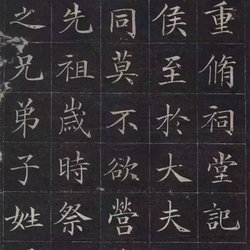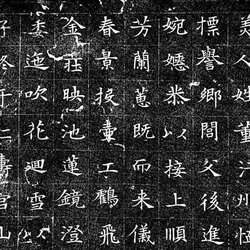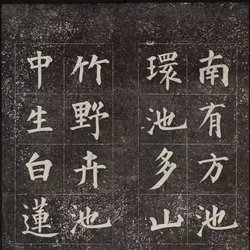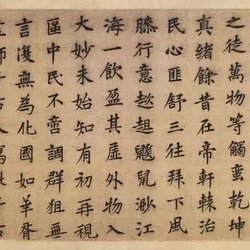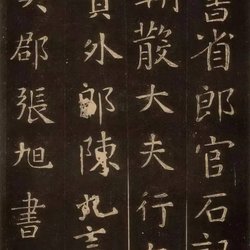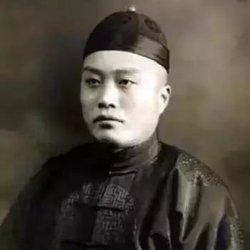The art of calligraphy in modern times has developed with unprecedented prosperity, and famous calligraphers have emerged in large numbers, leading the new trend of calligraphy art. Today I will share with you the regular scripts of famous calligraphers in modern times, please enjoy!
Yu Youren
The famous master of cursive script in Wei Dynasty
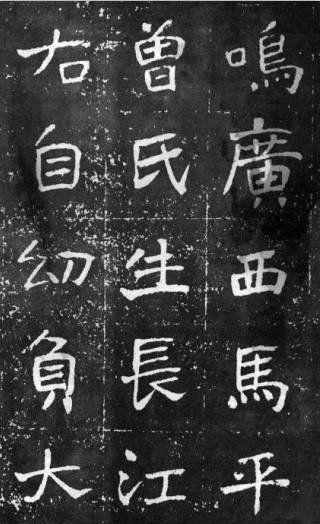
Yu Youren's "Zeng Mengming Monument" in regular script
Yu Youren devoted himself to calligraphy in the early years of Wei Dynasty. In his middle age, he studied cursive calligraphy intensively, focusing on the original and elegant forms, gradually forming a unique calligraphy style that is majestic, free and brilliant. His couplet works further interpret this calligraphy style to the extreme.
Zhang Daqian
But because the title of the painting was too loud, the title of the book was eventually obscured by it.
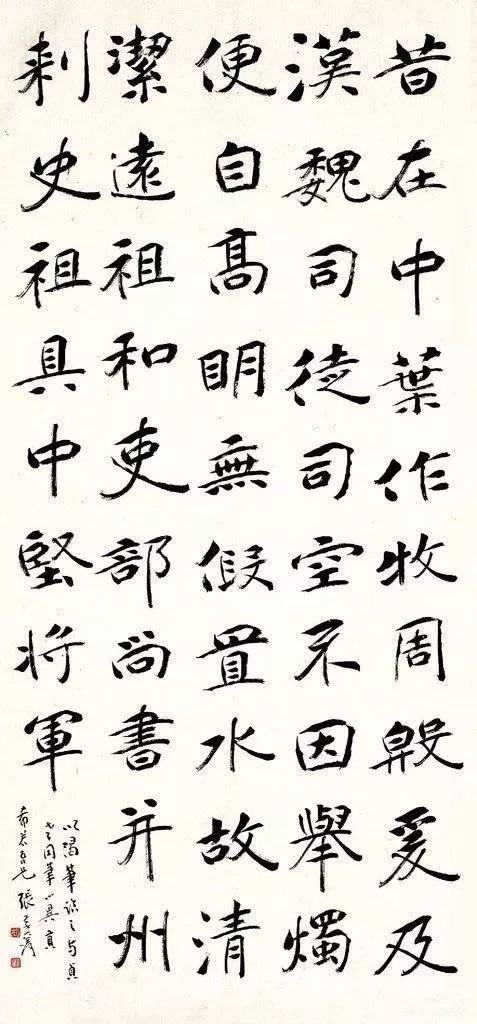
Zhang Daqian (1899-1983), whose given name was Yuan, also had the courtesy name Ji Yuan, and also the courtesy name Daqian. He was named the father-in-law of Nanchang, and signed as Yuan Weng and Yuan Yu after 70 steps. A native of Neijiang, Sichuan. A contemporary Chinese painting master renowned at home and abroad. What a legendary life. He had a stage name at an early age. Live a long life. Rich enough to rival a country. Calligraphy is based on the stele of the Wei Dynasty, and is also learned from the Tang and Song Dynasties. He is most interested in the "Inscription on the Crane", "Inscription on the Stone Gate", "The Stone Carved by Yunfeng", and "The Stele of Zheng Wengong". The cursive script is the best, with long strokes and long strokes, vertical and horizontal images, mature writing, stretched knots, and a strong and elegant style. His brushwork and composition are different from ordinary people, and he has a unique personality. He is known as the "Great Thousand Body". Zhang Daqian studied art from Zeng Xi and Li Ruiqing in his early years. He can be said to have profound skills and a huge source of knowledge.
Li Shutong
Regular script that enters the world, Buddhism that transcends the world
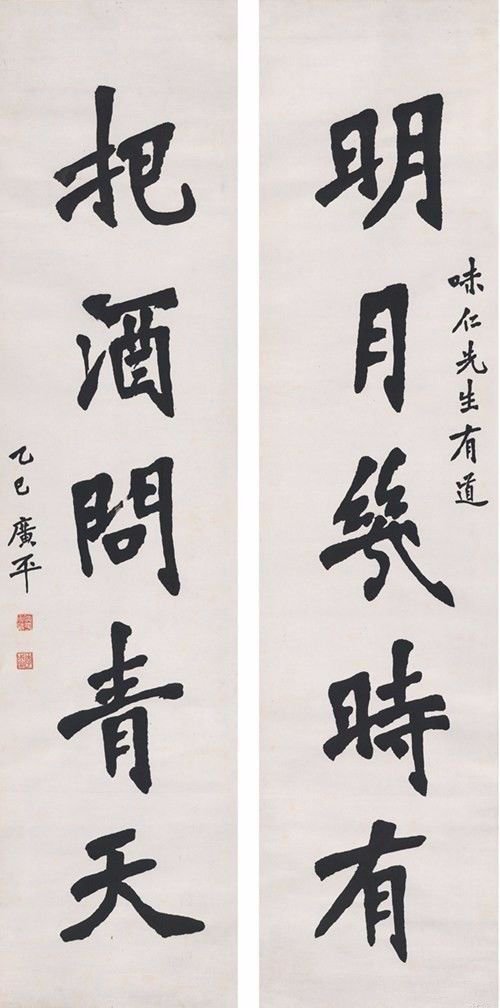
Li Shutong regular script five character couplet
Li Shutong (1880-1942), whose given name was Wentao and whose courtesy name was Shutong, had many aliases. A native of Pinghu, Zhejiang, born in Tianjin. Li Shutong's writings are naturally divided into two completely different periods, namely before becoming a monk and after becoming a monk. Influenced by the trend of the times, Li Shutong naturally studied Wei steles at an early age. He repeatedly studied the steles such as "Twenty Ranks of Longmen", "Zhang Menglong" and "Cuan Baozi". However, Li Shutong's stele was more polished than others, and it seems that he mainly relied on its wonderful structure. Basically, it has not formed its own identity. After Li Shutong became a monk, he "gave up all the arts except calligraphy." He used calligraphy to promote the sutras and Buddhism, but his early sharp talent and the vigorous and majestic style of Wei stele disappeared and were replaced by What appeared on his face was a face that was so peaceful and solemn that it was otherworldly. In his later years, Li Shutong's calligraphy mainly focused on copying pages and couplets from Buddhist scriptures. The font tends to be long and narrow, the strokes are light and slow, and the layout space is very sparse. It presents a solemn and ancient Buddhist atmosphere.
Lu Weizhao
Regular script masters who combine inscriptions and inscriptions
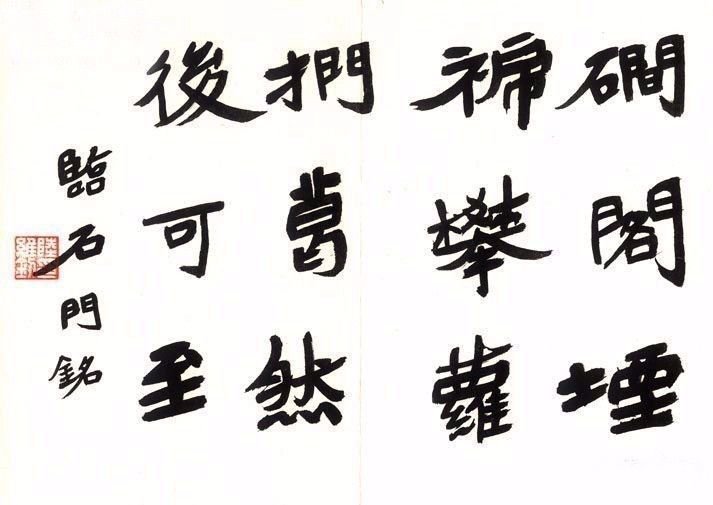
Lu Weizhaolin's "Shimen Inscription"
Lu Weizhao (1899-1980), whose original name was Ziping and whose courtesy name was Weizhao, was often signed as Shaoweng in his later years. A native of Pinghu, Zhejiang. He is a contemporary calligrapher with a comprehensive knowledge of traditional Chinese culture. Beginning in 1979, he was ordered to recruit the first batch of graduate students in calligraphy and seal cutting in China, so he was also a calligraphy educator. Lu Weizhao also learned from Wei Bei at the beginning, but he never suppressed the inscriptions, and followed the path of paying equal attention to the inscriptions and inscriptions. He said that "steles can strengthen one's bones, and posts can nourish one's energy." He can be described as a good scholar. ; Based on the seal script and official script, he integrated it into the grass style and created a new style that is neither seal script nor official script, and is both seal script and official script. The pen is both square and round, and the structure is square in the middle and is flat in the middle. It is popular among people as "flat seal script", that is, The ancients said that "no one can reach it except an experienced person".
Zhao Puchu
Jin Jian, graceful and broad-minded regular script
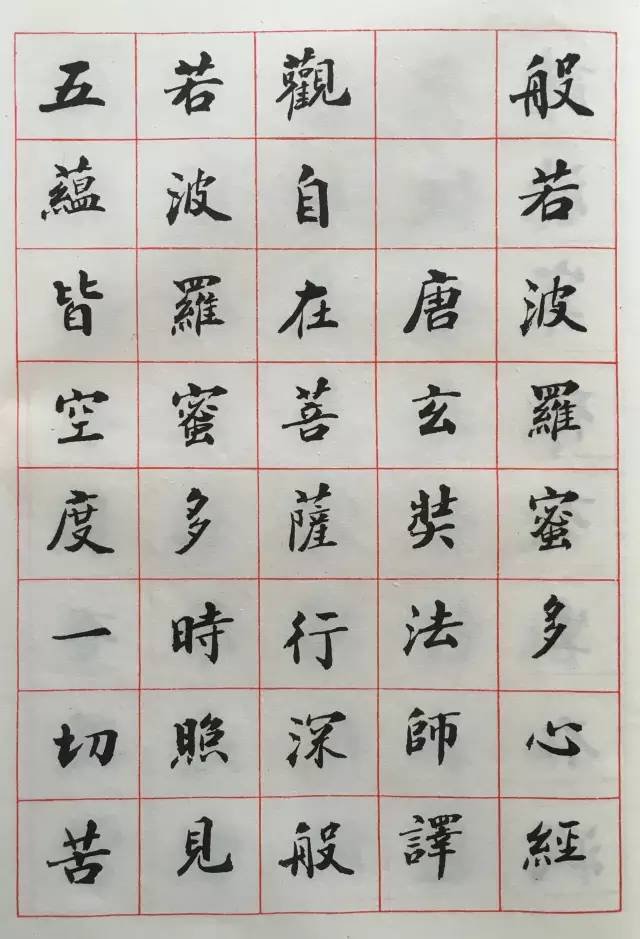
Zhao Puchu's regular script "Heart Sutra"
Zhao Puchu (1907-2000), a native of Taihu, Anhui, was a famous scholar, Buddhist scholar, and social activist. He was the former president of the Chinese Buddhist Association. He is also a famous calligrapher. His influence spread all over the world, especially among religious figures. His calligraphy is best in regular script, which was derived from Li Beihai and Su Dongpo. The style of the calligraphy is tilted to the upper right, with a rigorous structure. His writing is strong and graceful, and he has a kind of graceful and broad-minded attitude, which vaguely reveals a Buddhist atmosphere. Other well-known calligraphy scholars include Luo Zhenyu, Zhang Binglin, Liang Qichao, Wang Guowei, Dong Zuobin, Shen Congwen, Tai Jinnong, Shang Chengzuo and others.
Pu Xinshe
It is said that everyone can learn the Liu style, and the editor thinks that Pu Erye deserves the title.
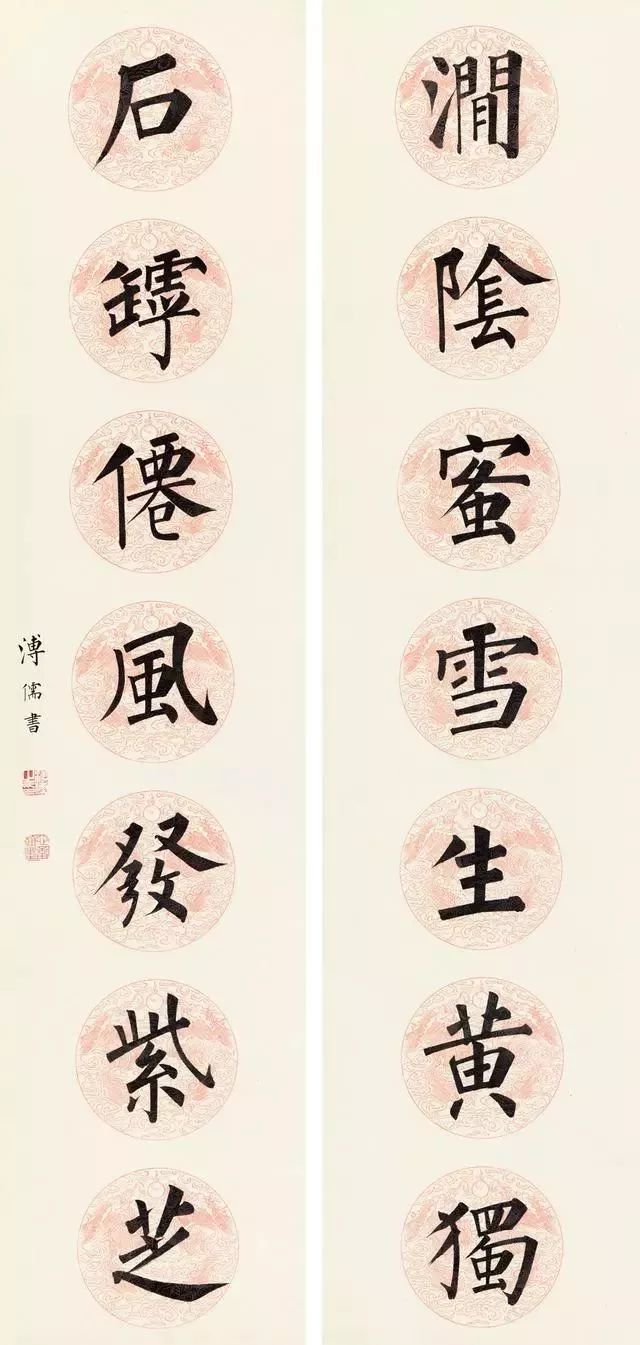
Pu Xinshe regular script couplets
Pu Xinshe (shē) (September 2, 1896 - 1963) was originally named Aixinjueluo Puru. His first name was Zhongheng, and he changed his name to Xinshe. He named himself Emperor Xi and Yishi of Xishan. A native of Beijing, Manchu nationality, he is the grandson of Prince Gong Yixin of the Qing Dynasty. He studied in Germany and was deeply interested in poetry, calligraphy and painting, and achieved great success in all of them.
Pan Linggao
Pan's calligraphy was once very popular and is rarely mentioned nowadays, but his regular script skills are unparalleled today.
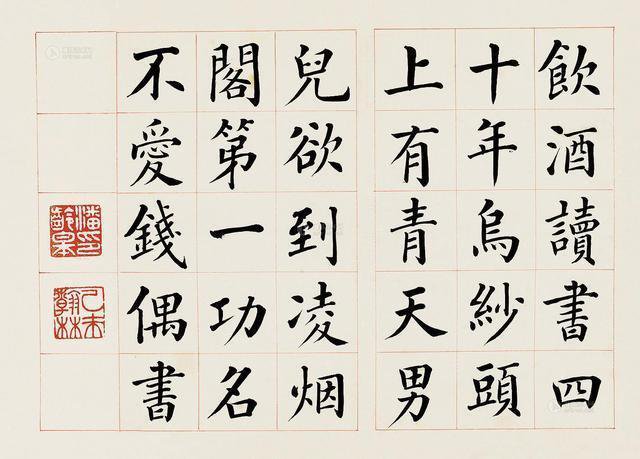
Pan Linggao regular script
Pan Linggao (1867-1954), courtesy name Xijiu, was born in Anxin, Hebei Province. In 1881, 15-year-old Pan Linggao passed the scholar examination, passed the imperial examination in the 20th year of Guangxu of the Qing Dynasty (1894), passed the imperial examination, and was awarded the title of editor of the Hanlin Academy. He served as county magistrate in Gansu Province. Zhizhou. Prefect. After the success of the Revolution of 1911, Pan Linggao served as the governor of Gansu Province. He later resigned and returned to his hometown in 1922 because he hated official corruption. He then moved to Tianjin and Peiping, where he enjoyed composing poetry and writing, and became a famous calligrapher in the north during the Republic of China.
Shen Yinmo
Shen Lao's profound study of calligraphy is admirable. It is said that he has been studying one-stroke "na" painting for eight years.
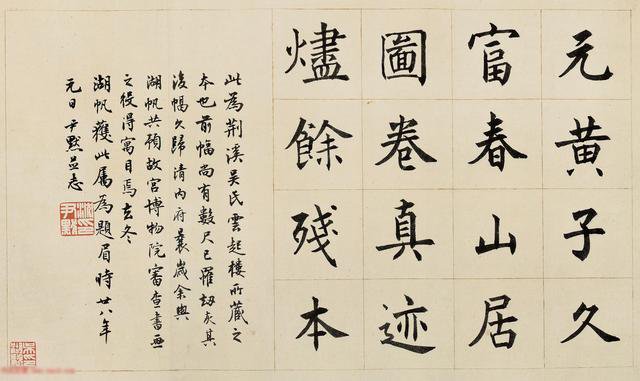
Shen Yinmo regular script
Shen Yinmo (1883-1971), formerly known as Junmo, was born in Huzhou, Zhejiang Province in 1883 in Hanyin Hall, Xing'an Prefecture, Shaanxi Province (now Minzhu Street, Chengguan Town, Hanyin County, Ankang City, Shaanxi Province). He studied in Japan in his early years and later served as professor and president of Peking University and professor of Fu Jen Catholic University.
Tangtuo
How hard it is to practice calligraphy and write hunchback on the back.
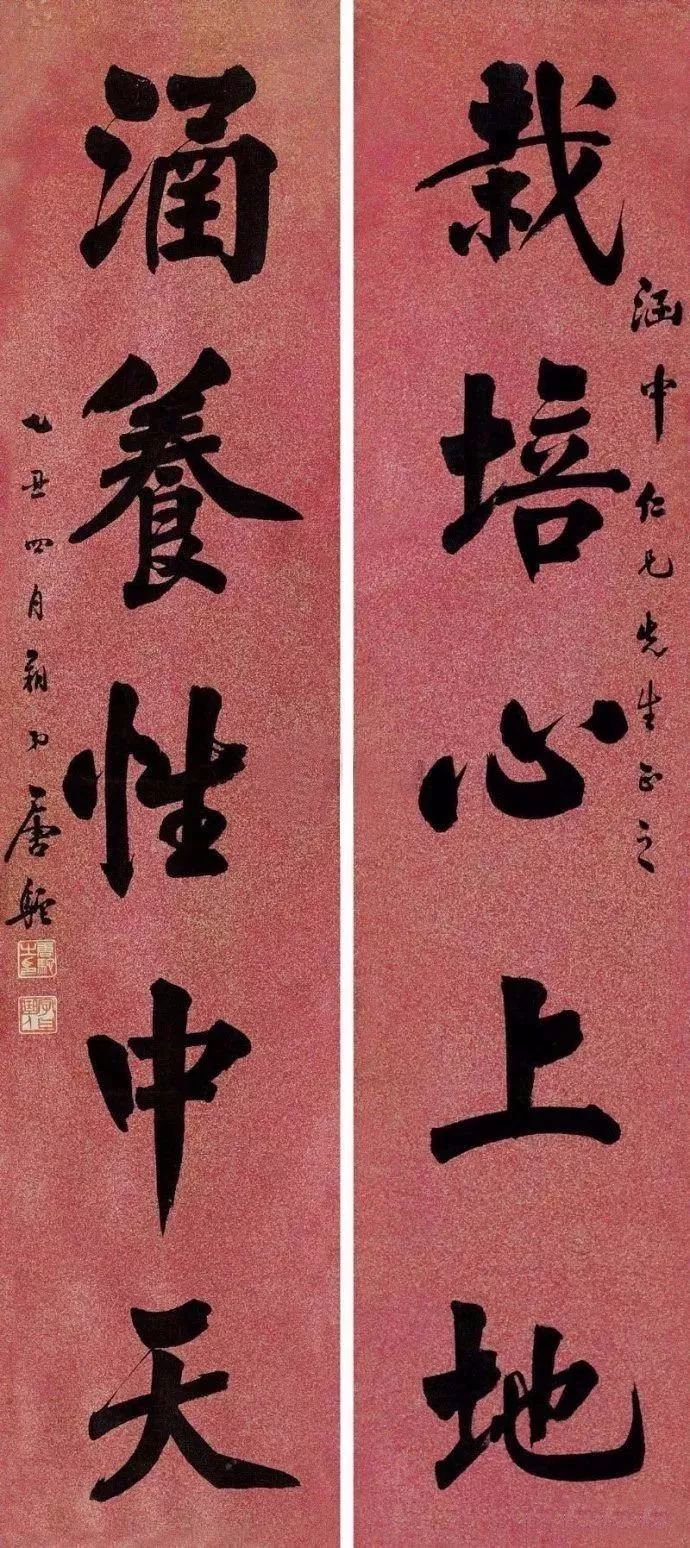
Tangtuo regular script
Tang Tuo (1871~1938), whose original name was Chenglie, also named Ziquan, was born in Wujin, Jiangsu Province. The pioneer of my country's modern printing industry. His calligraphy is beautiful, vigorous, subtle, simple and majestic. It was called Tang style at that time, and together with Shen Yinmo, Magongyu and Tiantai Shanren, he was called the four great masters of writing plaques.
Zheng Xiaoxu
Putting politics aside, calligraphy can be regarded as one of the great masters of the generation
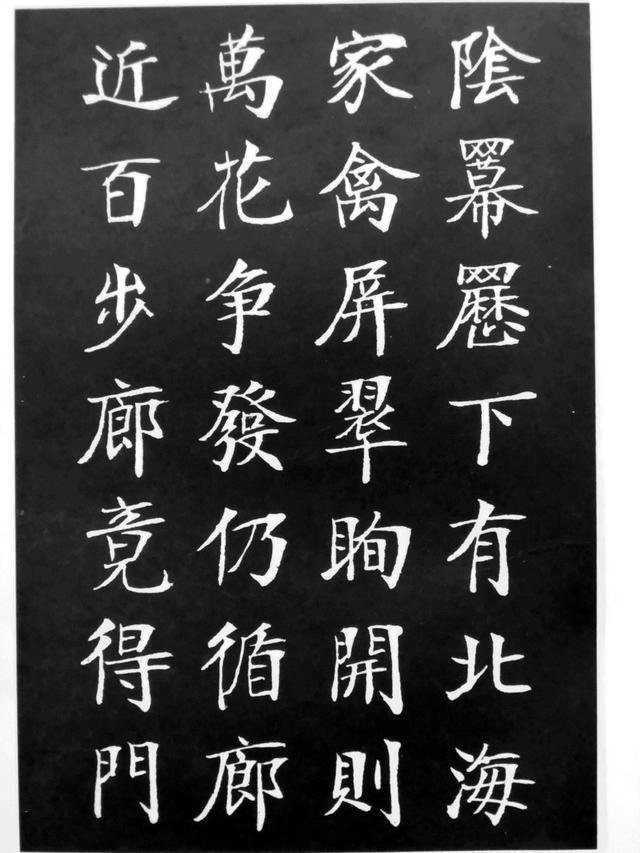
Zheng Xiaoxu regular script
Zheng Xiaoxu (1860-1938) was a political figure and calligrapher in modern China. A native of Minhou, Fujian Province. In 1882, the eighth year of the reign of Emperor Guangxu of the Qing Dynasty, he served as minister of border defense in Guangxi, envoy to Anhui and Guangdong, and chief envoy to Hunan. After the Revolution of 1911, he regarded himself as an old man. In 1932, he served as Prime Minister and Minister of Culture and Education of the Puppet Manchukuo. He was good at regular script, and he learned from Ouyang Xun and Su Shi, and gained his strength from the stele of the Northern Wei Dynasty. The work is vigorous and simple.
Zhang Boying
Teacher Qi Baishi is amazing
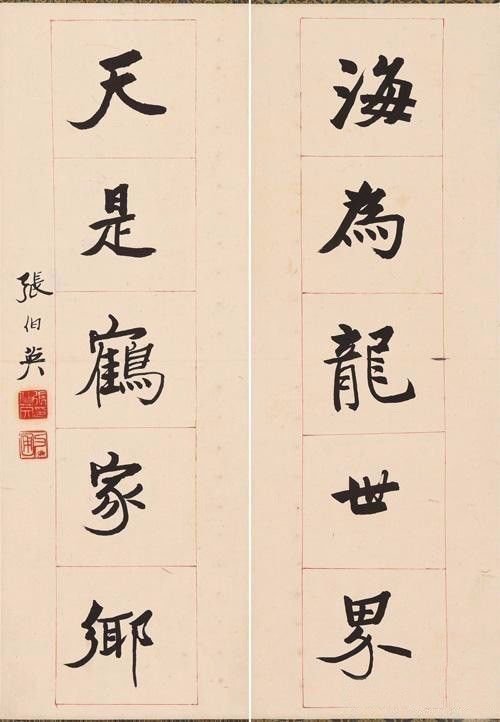
Zhang Boying regular script
Zhang Boying (1871-1949), also known as Shaopu and Shaopu, was given the name Qirang. He was also signed as Yunlong Mountain Man and Yuzhuang Old Farmer. His later nicknames were Dongya Laoren, Lao Shao and Shaosou. The name of the room is Yuanshan Tower, Xiaolai Bird House. A native of Tongshan District, Xuzhou, he was a scholar during the Guangxu Dynasty of the Qing Dynasty. Calligrapher, epigraphy connoisseur, poet, scholar.
Hua Shikui
The first in Jinmen, Yan Kai is unrivaled in modern times
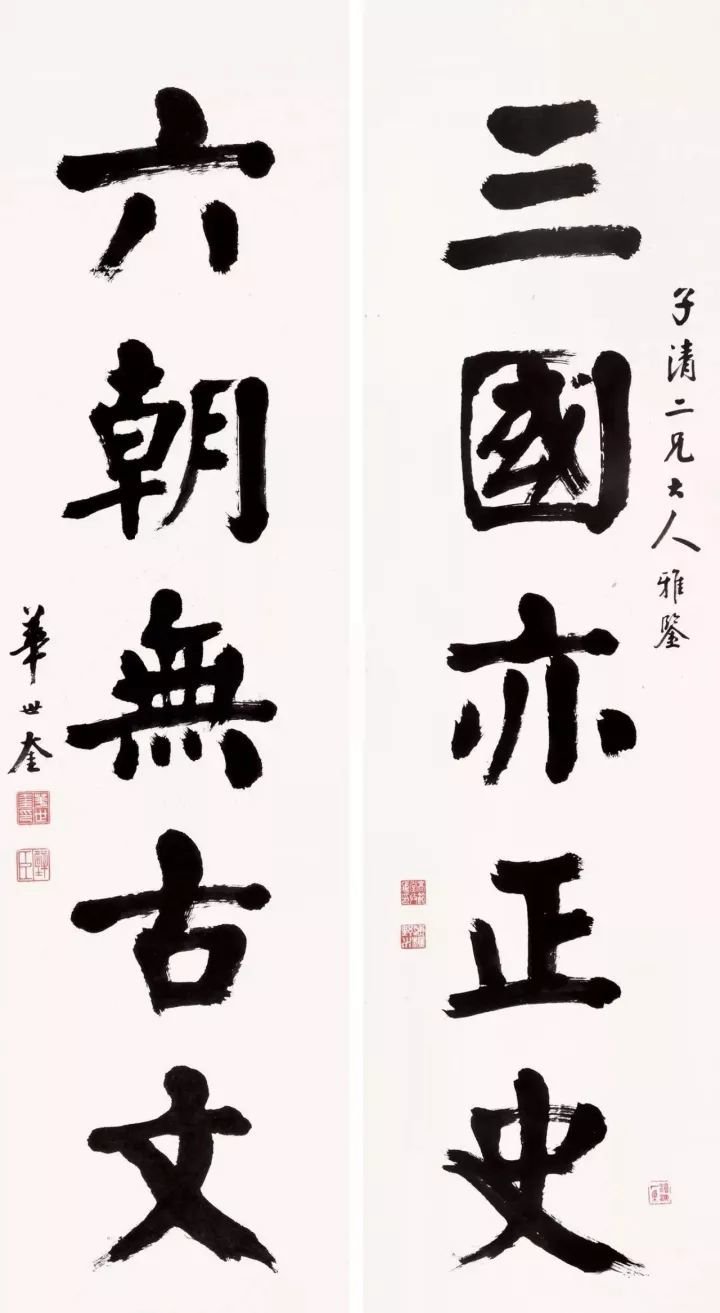
Hua Shikui regular script
Hua Shikui (1863~1941), courtesy name Qichen and nickname Bichen, was Han nationality and one of the "Eight Great Masters" in Tianjin. His ancestral home is Wuxi, Jiangsu, and he later moved to Tianjin. He is a famous calligrapher. His calligraphy strokes are based on the bones of Yan characters, with majestic spirit, open bones and profound skills. The five-character plaque with "Tianjin Quanyechang" written in handwriting, 1 meter large, vigorous and majestic, is his masterpiece. The calligraphy works range from young regular script to large calligraphy with a diameter of more than a ruler. The structure is dignified and relaxed, and they become more vigorous and upright in his later years. He ranks first among the four major calligraphers in Tianjin in modern times.
Tan Yankai
Another Yan Kai master, General Hanlin
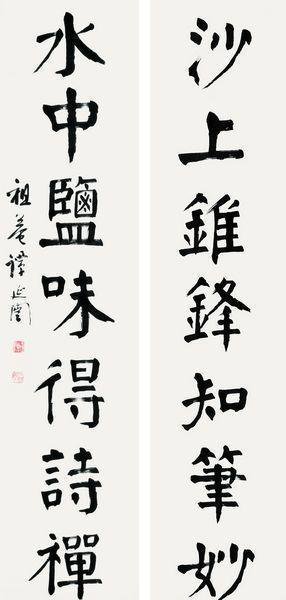
Tan Yankai regular script
Tan Yankai (1880-1930), whose courtesy name was Zu'an and whose nicknames were Wuwei and Qiezhai, was from Chaling, Hunan. Together with Chen Sanli and Tan Sitong, he is known as the "Three Young Masters of Huxiang"; together with Chen Sanli, Xu Renzhu and Tao Jucun, he is known as the "Four Young Masters of the Reform". Born in Hangzhou, Zhejiang Province, he was a famous politician, calligrapher and founder of Hunan Cuisine during the Republic of China.
Pan Boying
The two kings of running script and regular script Chu Suiliang both have very high standards.
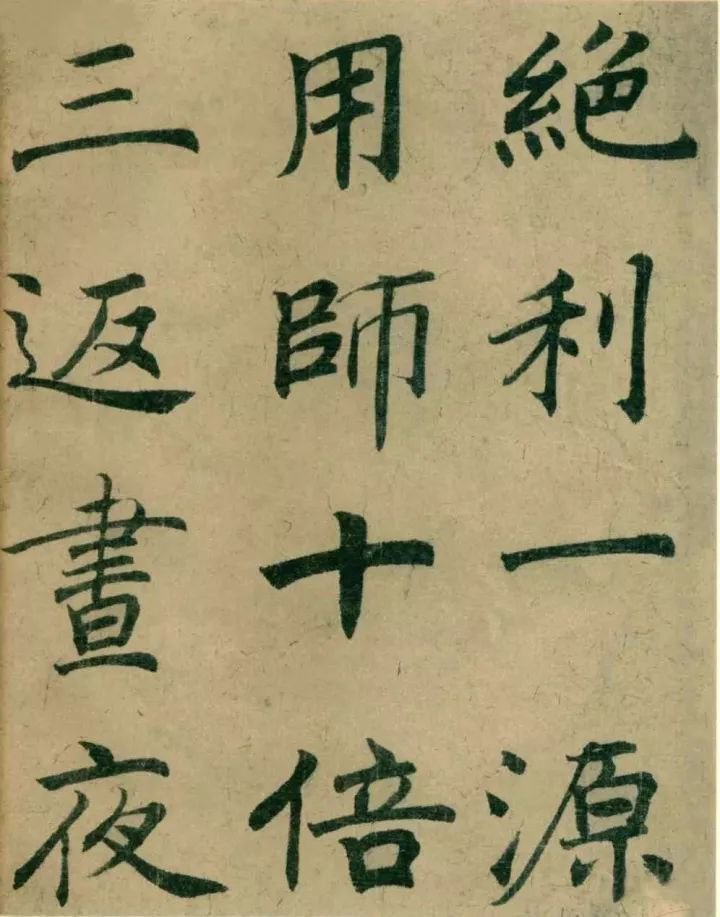
Pan Boying's "Yin Fu Jing"
Pan Boying (1904-1966) was born in Huaining, Anhui. The original name was Shi, with the courtesy name Boying. Later, it was named Xing, with the nicknames Fu Gong You Fa Weng and Que Qu Weng. The other names were Gu Yun. Modern calligrapher, poet, novelist. Pan Boying is a world-recognized calligraphy master. When talking about Pan Shu, many people say that he is "an active admirer of the calligraphy style of the two kings".
Deng Sanmu
He is an all-round master, skilled in all styles of calligraphy, and is also a pioneer in hard-pen calligraphy.
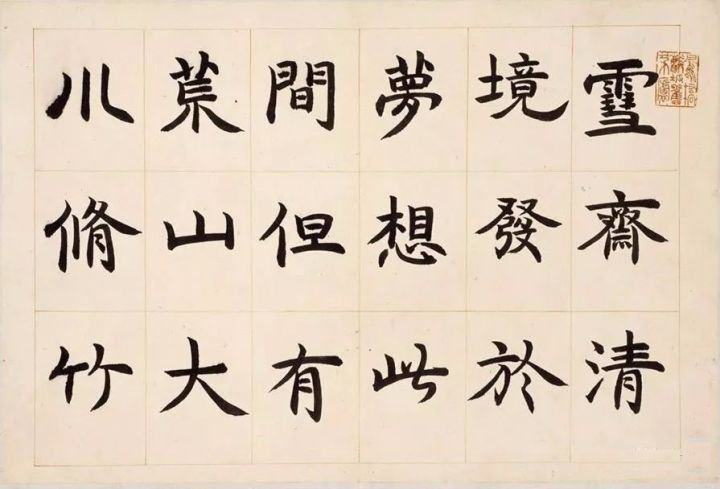
Deng Sanmu regular script
Deng Sanmu (1898-1963) was a modern Chinese calligrapher and seal engraver, and a member of the Chinese Calligraphy Research Society. His original name was Tie, his academic name was Shijie, and his courtesy name was Chuntie. His nickname was Qiequzi, and his nickname was Yikui and Yizu. Born in Shanghai, he is known as "Northern Qi (White Rock) and Southern Deng" in the art world. He is good at calligraphy and seal cutting, and is excellent in Zhen, Xing, Cao, Seal and Li.
Wu Yuru
Ouyang Zhongshi’s teacher, everyone who has been ignored
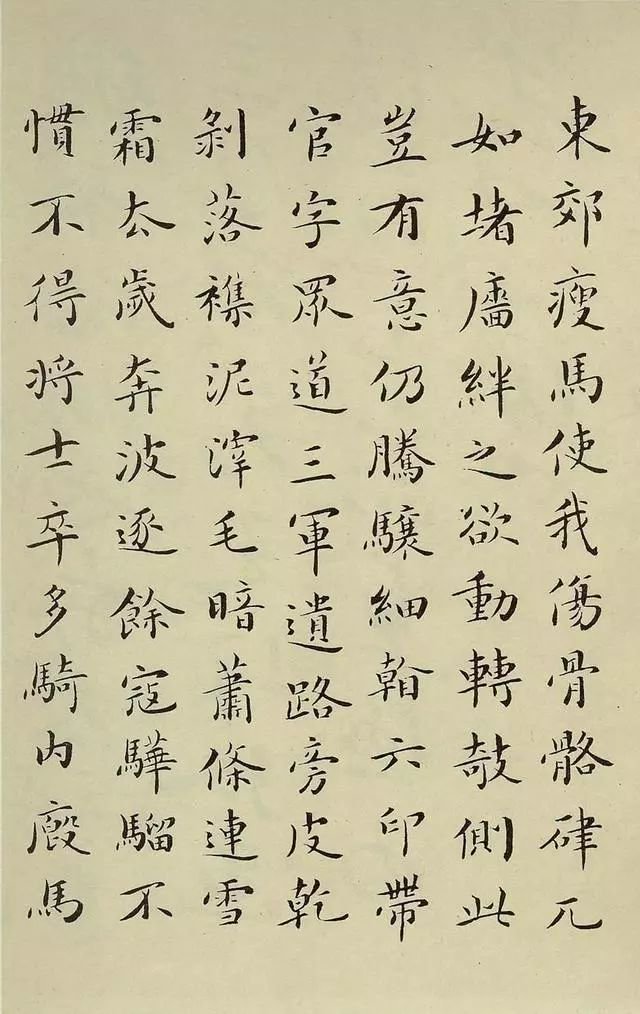
Wu Yuru regular script
Wu Yuru, whose courtesy name was Jiayuan, later changed to Xing. Born in Nanjing in 1898. He was originally from Maolin Village, Jingxian County, Anhui Province, so he was named Maolin Jushi in his early years, and he was named Yuansou in his later years. He studied at Nankai Middle School in Tianjin and was in the same class as Zhou Enlai. He was appreciated by the principal Zhang Boling for his proficiency in classical Chinese. After the victory of the Anti-Japanese War, Wu Yuru taught at Zhida Middle School, Daren College, Business School and other schools. After the Business School was changed to Jingu University, he served as the director of the Chinese Department until the liberation of Tianjin.
Mai Hua San
Guangdong has great influence and is good at regular script, especially small script.
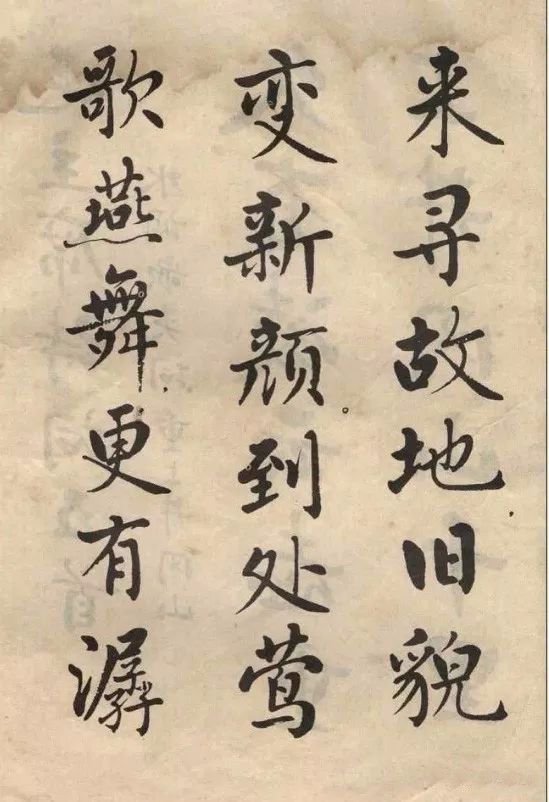
Maihua three regular scripts
Mai Huasan, male, Han nationality, from Panyu District, Guangzhou City. He has been engaged in education since he was 17 years old. He served as a teaching assistant at Guangzhou University in 1938, a lecturer in 1944, an associate professor in 1948, the principal of Guangzhou Maosheng Memorial School in 1950, and taught at the Guangzhou Academy of Fine Arts in 1961. During his lifetime, he was an associate professor at the Guangzhou Academy of Fine Arts and a librarian at the Guangdong Provincial Research Center of Literature and History.
Sha Menghai
It has great influence in modern times, especially the Zhejiang generation, which has many disciples.
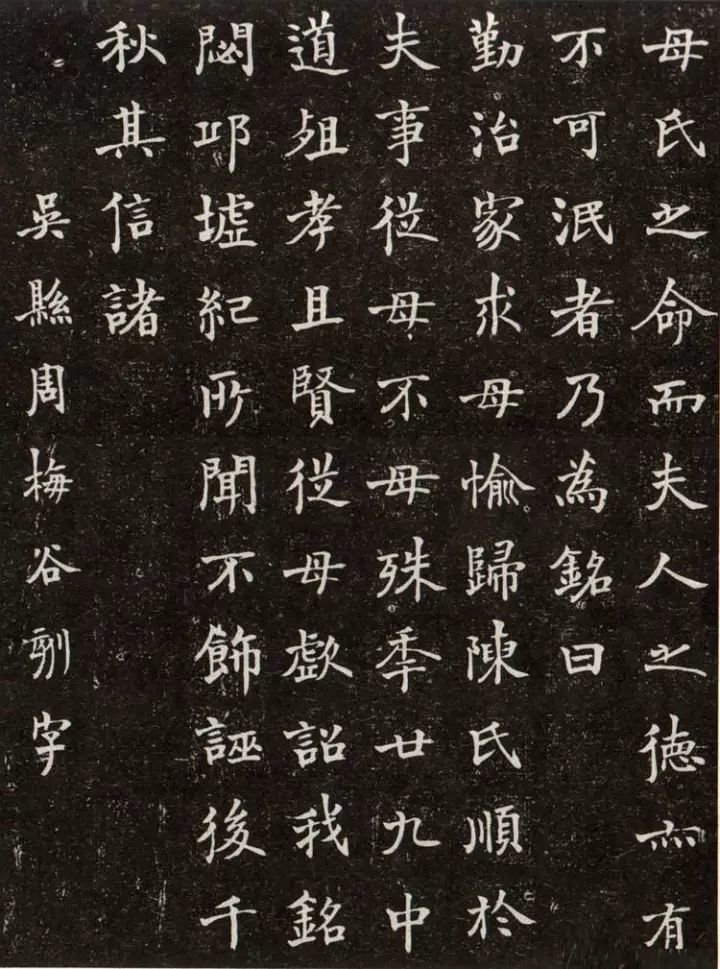
Sha Menghai regular script
Sha Menghai (1900-1992) was born in Yin County, Zhejiang Province (now Yinzhou District, Ningbo City, Zhejiang Province). A leading figure in calligraphy in the 20th century. He has extensive research in language, literature and history, archaeology, calligraphy, seal cutting, etc. Graduated from Zhejiang Provincial Fourth Normal School. He once served as professor of the Chinese Department of Zhejiang University, professor of Zhejiang Academy of Fine Arts, president of Xiling Seal Society, president of Xiling Painting and Calligraphy Institute, honorary director of Zhejiang Provincial Museum, and vice chairman of the Chinese Calligraphers Association.
Qi Gong
Creator of "Qiti"
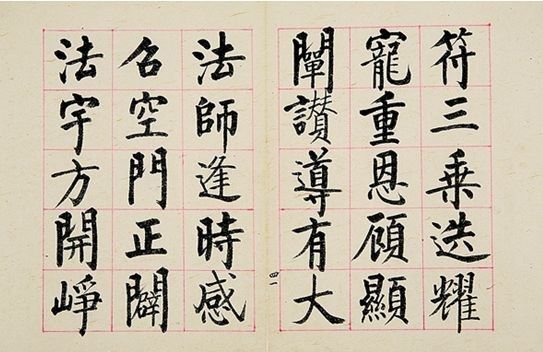
Qigong regular script
Qigong (1912-2005), who called himself "Qi Minggong", had the courtesy name Yuanbai, also known as Yuanbo, and the name Yuanbei Jushi. He was a Manchu in Beijing. The ninth generation grandson of Emperor Yongzheng. A famous contemporary Chinese calligrapher, painter, educator, classical philologist, connoisseur, redologist, poet, and master of Chinese studies. He once served as associate professor and professor at Beijing Normal University, member of the Standing Committee of the National Committee of the Chinese People's Political Consultative Conference, chairman of the National Cultural Relics Appraisal Committee, director of the Central Research Institute of Literature and History, doctoral supervisor, consultant of Jiusan Society, honorary chairman of the Chinese Calligraphers Association, and world Chinese calligrapher and painter. Founding Chairman of the Buddhist Association of China, consultant to the Chinese Buddhist Association, the Palace Museum, and the National Museum, and president of the Xiling Seal Society.

